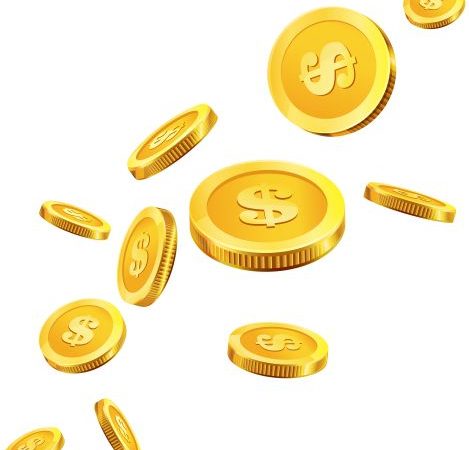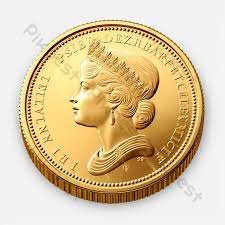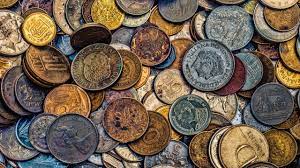“SOFT POWER” KOPIKA
The sizes of the obtained ingots were different in weight and shape. But there was also one thing in common: an inscription in the Tatar language appeared on the reverse side of the coins.
At that time, Muscovy was actively expanding to the East, in particular to the “Tatar” Volga region. One of the tools of “soft power” of that time was expansion with the help of money, the inscriptions on which were understandable to the local population. As they would say today, with the help of the reserve currency – “money”.
No one will deny that this experience has been very successful. From the second half of the fifteenth century until the incorporation of these possessions into Russia, “denga” was an unconditionally accepted means of payment. A direct consequence of this success was the monetary reform of Elena Gilinsky, wife of Vasilis III, carried out in 1534-1538.
He was active in foreign economic activity, which required large expenses, so there was a need to reduce the mass of coins.
“Novgorodian” was called a penny weighing 0.68 grams, cut out of silver. Half a kopeck corresponded to the “Muscovite” – a silver dengue weighing 0.34 grams, which depicted a horseman with a saber – a heraldic symbol known from the coins of Ivan III.
FIRST RUBLE KOMOM
After the monetary reform carried out in 1535, a single monetary system was formed on the territory of the Russian Kingdom, which assumed the presence in circulation of only silver money, a penny and a half. But there were not enough silver mines in the country. Over time, this led to the “copper riot” in 1662.
But in 1654 Tsar Alexei Mikhailovich had to solve another problem: during the war with the Commonwealth, a number of territories of modern Ukraine and Belarus were acquired. It was necessary to equate the monetary circulation of Russia with theirs, based on the European coin. Western European circulation until the middle of the 18th century was based on a silver thaler with the image of St. Joachim, which was called “efimkas” in Russia. Until 1654, efimkas were a source of high-grade silver for the production of Russian kopecks. In 1654, the images of the tsar and the state emblem began to be applied over the efimkas. This coin became the first in Russia with a face value of one ruble.
However, the countable ruble in old kopecks weighed about 45 grams. The weight of the efimkas was 28–32 grams: the new ruble from birth was a defective coin. It was not a big secret for the population that 64 kopecks were minted from one efimkas at the mint, while they were bought abroad at 50. The defective ruble was not in demand. He did not live even a year, his release was discontinued.
In 1655, the application of two hallmarks on thalers was begun, and thus “efimkas with a sign” were obtained, i.e. “Pseudo-ruble”. But, alas, in 1659 and “efimkas with a sign” ceased to be legal tender. They were to be exchanged for copper coins.
Thus, the ruble of Alexei Mikhailovich is the first ruble coin in Russia. However, only about 40 original copies have been described, and they are found mainly in museum collections.
LOVE CHEKHA
Peter I in 1689 brutally suppressed the Streletsky revolt and began to resolutely break with the past, but at the same time, according to numismatists, “threw out the child along with the water.” The name of this “child” has already been forgotten: “Pesky Czech”. And in those years around this coin, equal at face value to a penny and minted in huge quantities thanks to automation, serious passions were seething.
The coin was minted in 1686-1687 for the monetary support of the Crimean campaigns of Prince Vasilis Gallitzin, the favorite of Princess Sophia Alekseev, and also as a means of payment on the territory of Ukraine. The new coin was issued from low-standard silver. The external design was reminiscent of Polish samples (“Czechs”), but with tsarist symbols. Its peculiarity was the lack of denomination, as well as the fact that its minting was carried out in the town of SUVs near Bryansk. Hence the full name of the coin.
But “something went wrong.” Despite the measures aimed at introducing low-grade SUVs Czechs into circulation, the population of the Ukrainian and Belarusian lands increasingly refused to accept them. Quite a few servicemen, who were given their salaries in this coin, could not buy vital goods. This led to an outbreak of hunger and social protests. The accumulated coins under Peter I were melted down and coined into Russian coins. The remaining “Czechs” were equated with counterfeit money.
Peter I, who came to power, resolutely set about restoring order. Hatred for Princess Sophia expanded the circle of his dislike for the favorites of the princess and archers, whose actions led to a crisis in the country. Peter’s “showdown” with the “Pesky Czech” had grains of common sense due to the low share of silver in them. But the “Czechs” had a lot of merits associated with the growth of the Empire to the West. Ten years after these events, Peter began a major monetary reform, and then this became especially clear. But first there was hatred …






Leave a Reply